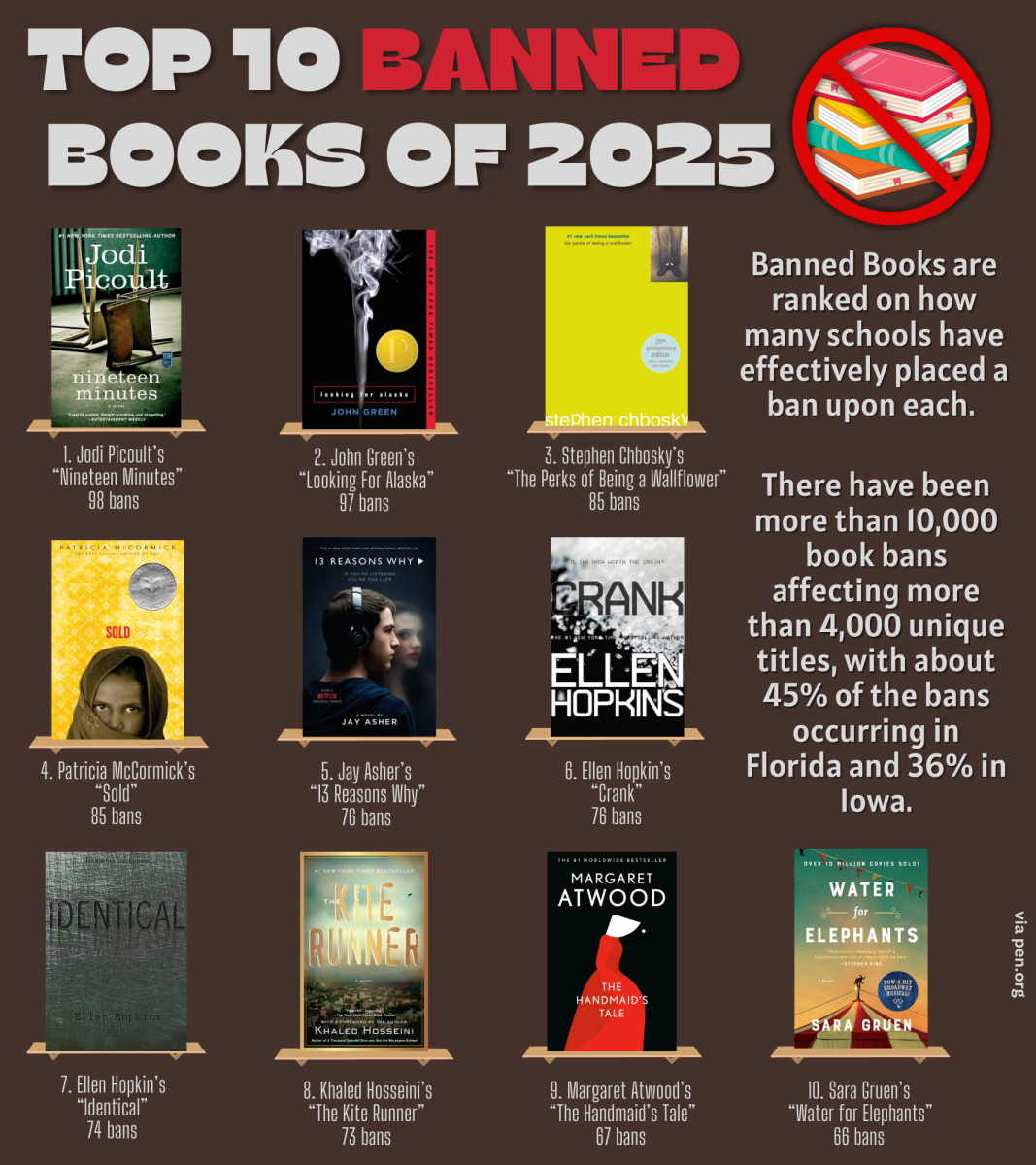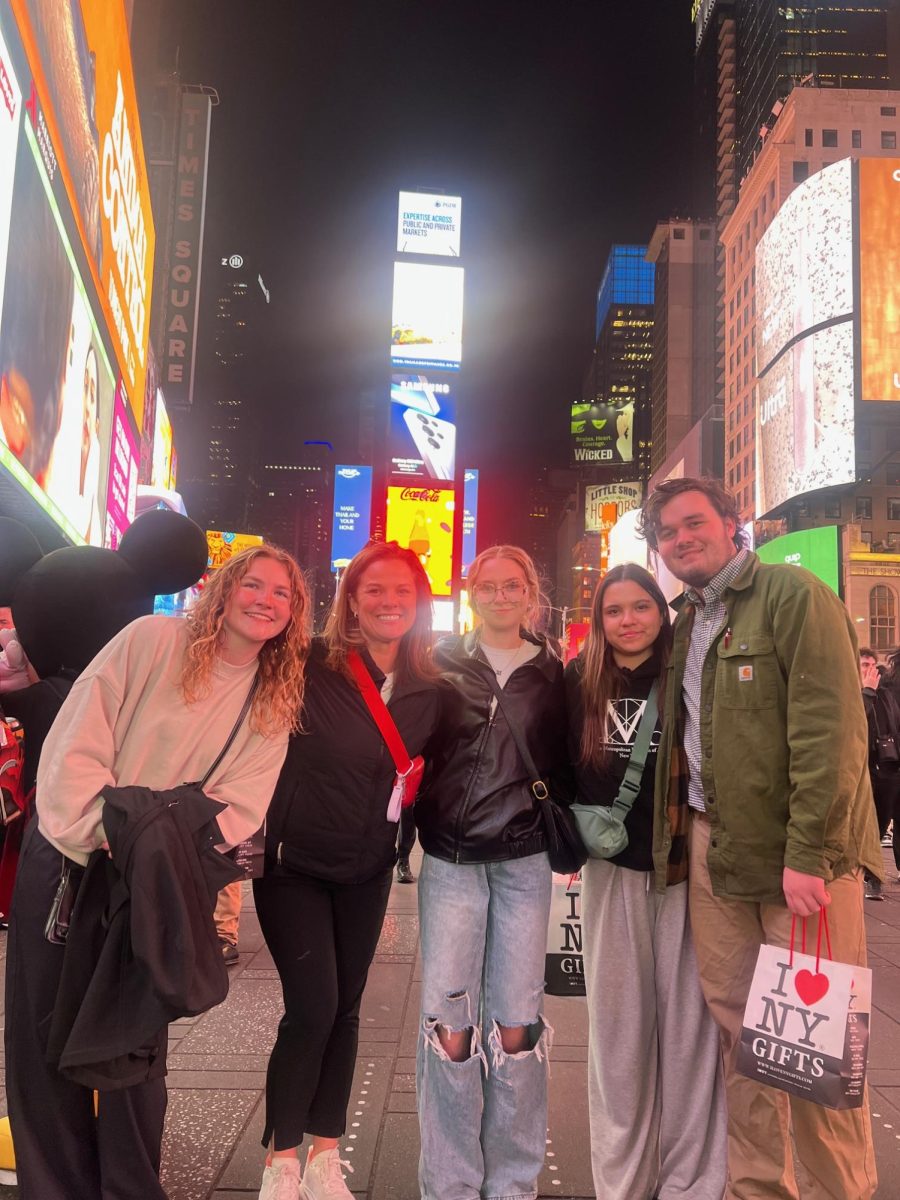The Associated Press
St. Louis Post-Dispatch, Aug. 18
A ‘generational event’ demands a generational change:
One of the police commanders who had been on the ground in Ferguson last week came away convinced that what has happened there changes everything.
“This is a generational event,” he said.
From now on, he said, local public policy decisions will be measured in “pre-Ferguson” and “post-Ferguson” terms. The challenge for this community, for its cops and politicians and civic leaders, as well as residents of all races and all addresses, is how we adapt to life after Ferguson.
St. Louis hasn’t gone through anything like this in 51 years, not since the Jefferson Bank protests that began in late August of 1963. No one died in those protests, but nearly a hundred protesters were arrested. Shamefully, some of them were jailed until March.
At issue were hiring practices among city businesses. The civic and political leaders of that day dragged their feet. The police and judicial system backed them up. It took federal court intervention in March 1964 to embarrass the city’s leaders into changing policies.
That was a different time. There was no 24-hour news cycle, no social media, little in the way of international interest in this story. There were civil rights stories all over the country, many more dramatic than people sitting on the floor of a bank and being hauled off to jail.
But this one was ours. And it did some good, created some jobs, spawned a generation of leaders. The city’s 26th ward alderman, William L. Clay Sr., was among the leaders who was jailed. Four years later, he was elected to Congress and spent 32 years there. His son, William Lacy Clay Jr., succeeded him in 2000 and has been there since.
There was progress. But it didn’t transform St. Louis.
Because of the federal Civil Rights Act of 1964 and the Voting Rights Act of 1965, many of the more egregious manifestations of racism have been mitigated. They have not all been erased, no matter what the U.S. Supreme Court suggested last year when it struck down key parts of the Voting Rights Act.
Until an unarmed 18-year-old man, Michael Brown, was shot dead by Ferguson Police Officer Darren Wilson a week ago Saturday, St. Louis has enjoyed, if that’s the right word, 50 years of racial peace and some important progress. Not enough, but some.
Fifty years is two generations. In most cases, two generations of whites enjoyed those years more than their black counterparts, who found fewer job opportunities, fewer good schools and fewer housing options. The reasons for that are many and complicated, but the least that can be said is that St. Louis didn’t often go out of its way to do much about it.
As our colleague Bill McClellan has observed, we are the descendants of those who stayed behind when bolder people opened the West. Complacency is in our marrow.
Now we’ve been called on it. Now we have been summoned to a generational change.
“Whenever there is a major event that is not positive, it always accelerates change.”
That’s what Dallas Mayor Mike Rawlings told the Dallas Morning News last year as the city prepared to mark the 50th anniversary of President John F. Kennedy’s assassination. Fairly or not, Dallas became labeled “The City of Hate,” an image city fathers took pains to address. Still, the image persisted until the glory years of the Dallas Cowboys and an eponymous television soap opera.
In the nine years since Hurricane Katrina devastated New Orleans, the city has been rebuilt with billions of federal dollars. It is smaller by 100,000 residents, but a higher percentage of them are entrepreneurs. Today’s New Orleans has more knowledge-based industries, far better schools and a reputation among young people as a cool place to live.
The assassination of a president and a hurricane that killed nearly 1,000 people are entirely different generational events than what has gone on in Ferguson. We will not have Roger Staubach or J.R. Ewing to change our image, and in this day and age, the odds that St. Louis will get infusions of billions of federal dollars to address its mistakes are slim and none.
No, we’re going to have to do this ourselves.
Eventually the television cameras and news reporters left Dallas and New Orleans. They will leave St. Louis, too, along with the visiting civil rights firemen, the outside hell-raisers and the self-anointed experts. The ubiquitous #Ferguson hashtag will fade.
We will be left to work this out on our own, beginning with the judicial process, including a Justice Department investigation. What does it say about St. Louis that the Justice Department doesn’t even trust a medical examiner’s autopsy?
As the judicial process unfolds this fall, we’ll see Ferguson debated as part of the St. Louis County executive’s election. Ferguson could be, and should be, an object lesson in discussions about ending city-county fragmentation between now and 2016.
Would metro-wide government and policing have made a difference in how Ferguson was policed, before and after Michael Brown’s death? There’s no doubt about it.
This editorial page has proposed a gubernatorial Ferguson Commission to look at the events of last week and those that led up to it. We’ve proposed that St. Louis’s great universities study and make recommendations about a path forward. We believe greater educational opportunity is critical.
A generational event demands a generational response, a fundamental shift in the old way of doing things. You only get one shot at it. And you need to get it right.
___
The Kansas City Star, Aug. 19
Governor makes right call on Ferguson:
Gov. Jay Nixon on Monday took the long-overdue action to order Missouri National Guard troops to Ferguson. They will try to help end the unrest and violence that followed peaceful protests in recent days over the fatal shooting of an unarmed black teenager by a white police officer.
The action “to help restore peace and order and to protect the citizens of Ferguson” followed Nixon’s declaration Saturday of a state of emergency in the St. Louis suburb and imposition of a late-night curfew enforced by the Missouri Highway Patrol. Violence Sunday night started three hours before the midnight curfew.
No curfew was to be in place Monday night, but authorities were expected to shut down some streets as the National Guard moves in.
Nixon was right to say Monday that people from outside Ferguson and the state were putting the community at risk. Having National Guard, police and the Highway Patrol in the city should help restore calm.
The community of 21,000 has been roiled by looting, vandalism, gunfire and clashes with police since the Aug. 9 fatal shooting of 18-year-old Michael Brown by Ferguson police officer Darren Wilson.
But during a visit on Sunday it was obvious from the boarded-up businesses that struggled to remain open, from people walking in neighborhoods and from those waiting at bus stops and shopping for groceries that Ferguson’s residents yearn for peace to return. They’re also right to demand transparency and independent investigations that the community and Brown family can trust.
A Sunday afternoon unity rally drew hundreds to the Greater Grace Church. Speakers — including the Rev. Al Sharpton, Bishop Larry Jones, Martin Luther King III, family attorney Benjamin Crump and Highway Patrol Capt. Ron Johnson — urged residents not to let anger over Brown’s death lead to violence.
Johnson, put in charge of security in Ferguson by Nixon, was cheered when he said he’d protect people’s right to protest and Brown’s death would positively change how America views black men and boys.
Other good things at the rally included organizers registering people to vote and many young people in yellow T-shirts being introduced as Disciples of Justice. They will help patrol the streets of Ferguson. People left the church understanding that justice takes time and their peaceful vigilance is necessary.
___
The Joplin Globe, Aug. 18
Takeaways from Ferguson:
Tensions that boiled over in Ferguson, Missouri, raise unsettling questions for Americans, including some of the same ones we have dealt with — badly — for decades.
Some takeaways that cannot be ignored:
— “Anyone who thinks that race does not still, even if inadvertently, skew the application of criminal justice in this country is just not paying close enough attention,” noted U.S. Sen. Rand Paul, R-Ky.
That truth has to remain at the forefront of conversations we have in light of the shooting as well as the community and police responses.
— Forty years ago, Ferguson was 99 percent white, but since then, there has been a dramatic demographic shift. The city today has a majority black population. More than two-thirds of its residents are black. Yet the police force had only three black officers among its 53-person department.
No one is saying white officers cannot be effective in black communities, but a police force that reflects its community is going to be able to better understand it, which is an important step to preventing trouble.
— Decades of militarization of police forces around the country, much of it done with the cooperation of Washington, is a troubling trend that showed its face in Ferguson. Deploying armored vehicles and responding with M4 rifles and combat gear aggravated rather than calmed the situation. It’s easy to understand why.
“I was looking at sniper rifles being pointed during the day at peaceful protesters,” David Goldstick, 38, a former Marine, told the Washington Post. “The violence seems to be incited almost exclusively by the police — and it’s not even police, it’s a paramilitary force.”
Ferguson Police Chief Thomas Jackson responded to all the criticism by saying it was “not military, it’s tactical operations,” but to outsiders, it looks a lot more like a small but well-equipped army rather than the police force one might expect in a town of 20,000 people in the Midwest.
___
St. Joseph News-Press, Aug. 16
Renewable fuels advance U.S. aims:
Odds are, your stance on the viability of renewable fuels depends on whose information you’ve read.
When farm groups produce a study, the results depict biofuels as a clean, efficient alternative to petroleum. When a study paid for by an oil company gets released, it says the same fuels are less efficient and take crops away from food production, raising prices at the kitchen table.
Even government studies have been accused of bias. Critics claim all pro-biofuel results have been tweaked to support the federal Renewable Fuels Standard, which requires a certain amount of renewable fuels to be blended into traditional fuels. Meanwhile, anti-biofuel results are dismissed as bought-and-paid-for by the oil lobby.
Sometimes it seems like it’s all a matter of whose science you trust.
Here’s what we believe: Agricultural producers in the Midland Empire are champs at adapting to new conditions and meeting market demands for their products. They and the biofuels industry in these parts have excelled at producing renewable fuels and developing new technologies that advance the nation’s interests in diversifying our fuel sources.
Besides, as long as renewable fuels standards exist, someone has to make this stuff. So why not us?
St. Joseph boasts three facilities that produce renewable fuels, with Lifeline Foods making ethanol and Ag Processing and Blue Sun producing biodiesel. ICM’s research facility alongside Lifeline Foods strives to develop cellulosic ethanol from resources like corn stover and other materials.
Drive a few miles outside the city, and you’ll find Golden Triangle Energy producing industrial ethanol in Craig, Mo., and MGP Ingredients making food grade ethanol in Atchison, Kan.
Not only do these facilities provide local jobs, they give farmers in the region an additional market for their corn and soybeans.
The group Fuels America published a study in April that claimed renewable fuels account for $1.4 billion in direct economic output and a combined 9,200 agriculture, manufacturing, wholesale and retail jobs in the 36 north Missouri counties of the 6th Congressional District. It also linked the industry to roughly $208 million in annual wages.
If the renewable fuels industry is destined to grow — as most industries do when time and technology advance — the investments made in our region will help us grow with it.
One of the police commanders who had been on the ground in Ferguson last week came away convinced that what has happened there changes everything.
“This is a generational event,” he said.
From now on, he said, local public policy decisions will be measured in “pre-Ferguson” and “post-Ferguson” terms. The challenge for this community, for its cops and politicians and civic leaders, as well as residents of all races and all addresses, is how we adapt to life after Ferguson.
St. Louis hasn’t gone through anything like this in 51 years, not since the Jefferson Bank protests that began in late August of 1963. No one died in those protests, but nearly a hundred protesters were arrested. Shamefully, some of them were jailed until March.
At issue were hiring practices among city businesses. The civic and political leaders of that day dragged their feet. The police and judicial system backed them up. It took federal court intervention in March 1964 to embarrass the city’s leaders into changing policies.
That was a different time. There was no 24-hour news cycle, no social media, little in the way of international interest in this story. There were civil rights stories all over the country, many more dramatic than people sitting on the floor of a bank and being hauled off to jail.
But this one was ours. And it did some good, created some jobs, spawned a generation of leaders. The city’s 26th ward alderman, William L. Clay Sr., was among the leaders who was jailed. Four years later, he was elected to Congress and spent 32 years there. His son, William Lacy Clay Jr., succeeded him in 2000 and has been there since.
There was progress. But it didn’t transform St. Louis.
Because of the federal Civil Rights Act of 1964 and the Voting Rights Act of 1965, many of the more egregious manifestations of racism have been mitigated. They have not all been erased, no matter what the U.S. Supreme Court suggested last year when it struck down key parts of the Voting Rights Act.
Until an unarmed 18-year-old man, Michael Brown, was shot dead by Ferguson Police Officer Darren Wilson a week ago Saturday, St. Louis has enjoyed, if that’s the right word, 50 years of racial peace and some important progress. Not enough, but some.
Fifty years is two generations. In most cases, two generations of whites enjoyed those years more than their black counterparts, who found fewer job opportunities, fewer good schools and fewer housing options. The reasons for that are many and complicated, but the least that can be said is that St. Louis didn’t often go out of its way to do much about it.
As our colleague Bill McClellan has observed, we are the descendants of those who stayed behind when bolder people opened the West. Complacency is in our marrow.
Now we’ve been called on it. Now we have been summoned to a generational change.
“Whenever there is a major event that is not positive, it always accelerates change.”
That’s what Dallas Mayor Mike Rawlings told the Dallas Morning News last year as the city prepared to mark the 50th anniversary of President John F. Kennedy’s assassination. Fairly or not, Dallas became labeled “The City of Hate,” an image city fathers took pains to address. Still, the image persisted until the glory years of the Dallas Cowboys and an eponymous television soap opera.
In the nine years since Hurricane Katrina devastated New Orleans, the city has been rebuilt with billions of federal dollars. It is smaller by 100,000 residents, but a higher percentage of them are entrepreneurs. Today’s New Orleans has more knowledge-based industries, far better schools and a reputation among young people as a cool place to live.
The assassination of a president and a hurricane that killed nearly 1,000 people are entirely different generational events than what has gone on in Ferguson. We will not have Roger Staubach or J.R. Ewing to change our image, and in this day and age, the odds that St. Louis will get infusions of billions of federal dollars to address its mistakes are slim and none.
No, we’re going to have to do this ourselves.
Eventually the television cameras and news reporters left Dallas and New Orleans. They will leave St. Louis, too, along with the visiting civil rights firemen, the outside hell-raisers and the self-anointed experts. The ubiquitous #Ferguson hashtag will fade.
We will be left to work this out on our own, beginning with the judicial process, including a Justice Department investigation. What does it say about St. Louis that the Justice Department doesn’t even trust a medical examiner’s autopsy?
As the judicial process unfolds this fall, we’ll see Ferguson debated as part of the St. Louis County executive’s election. Ferguson could be, and should be, an object lesson in discussions about ending city-county fragmentation between now and 2016.
Would metro-wide government and policing have made a difference in how Ferguson was policed, before and after Michael Brown’s death? There’s no doubt about it.
This editorial page has proposed a gubernatorial Ferguson Commission to look at the events of last week and those that led up to it. We’ve proposed that St. Louis’s great universities study and make recommendations about a path forward. We believe greater educational opportunity is critical.
A generational event demands a generational response, a fundamental shift in the old way of doing things. You only get one shot at it. And you need to get it right.
___
The Kansas City Star, Aug. 19
Governor makes right call on Ferguson:
Gov. Jay Nixon on Monday took the long-overdue action to order Missouri National Guard troops to Ferguson. They will try to help end the unrest and violence that followed peaceful protests in recent days over the fatal shooting of an unarmed black teenager by a white police officer.
The action “to help restore peace and order and to protect the citizens of Ferguson” followed Nixon’s declaration Saturday of a state of emergency in the St. Louis suburb and imposition of a late-night curfew enforced by the Missouri Highway Patrol. Violence Sunday night started three hours before the midnight curfew.
No curfew was to be in place Monday night, but authorities were expected to shut down some streets as the National Guard moves in.
Nixon was right to say Monday that people from outside Ferguson and the state were putting the community at risk. Having National Guard, police and the Highway Patrol in the city should help restore calm.
The community of 21,000 has been roiled by looting, vandalism, gunfire and clashes with police since the Aug. 9 fatal shooting of 18-year-old Michael Brown by Ferguson police officer Darren Wilson.
But during a visit on Sunday it was obvious from the boarded-up businesses that struggled to remain open, from people walking in neighborhoods and from those waiting at bus stops and shopping for groceries that Ferguson’s residents yearn for peace to return. They’re also right to demand transparency and independent investigations that the community and Brown family can trust.
A Sunday afternoon unity rally drew hundreds to the Greater Grace Church. Speakers — including the Rev. Al Sharpton, Bishop Larry Jones, Martin Luther King III, family attorney Benjamin Crump and Highway Patrol Capt. Ron Johnson — urged residents not to let anger over Brown’s death lead to violence.
Johnson, put in charge of security in Ferguson by Nixon, was cheered when he said he’d protect people’s right to protest and Brown’s death would positively change how America views black men and boys.
Other good things at the rally included organizers registering people to vote and many young people in yellow T-shirts being introduced as Disciples of Justice. They will help patrol the streets of Ferguson. People left the church understanding that justice takes time and their peaceful vigilance is necessary.
___
The Joplin Globe, Aug. 18
Takeaways from Ferguson:
Tensions that boiled over in Ferguson, Missouri, raise unsettling questions for Americans, including some of the same ones we have dealt with — badly — for decades.
Some takeaways that cannot be ignored:
— “Anyone who thinks that race does not still, even if inadvertently, skew the application of criminal justice in this country is just not paying close enough attention,” noted U.S. Sen. Rand Paul, R-Ky.
That truth has to remain at the forefront of conversations we have in light of the shooting as well as the community and police responses.
— Forty years ago, Ferguson was 99 percent white, but since then, there has been a dramatic demographic shift. The city today has a majority black population. More than two-thirds of its residents are black. Yet the police force had only three black officers among its 53-person department.
No one is saying white officers cannot be effective in black communities, but a police force that reflects its community is going to be able to better understand it, which is an important step to preventing trouble.
— Decades of militarization of police forces around the country, much of it done with the cooperation of Washington, is a troubling trend that showed its face in Ferguson. Deploying armored vehicles and responding with M4 rifles and combat gear aggravated rather than calmed the situation. It’s easy to understand why.
“I was looking at sniper rifles being pointed during the day at peaceful protesters,” David Goldstick, 38, a former Marine, told the Washington Post. “The violence seems to be incited almost exclusively by the police — and it’s not even police, it’s a paramilitary force.”
Ferguson Police Chief Thomas Jackson responded to all the criticism by saying it was “not military, it’s tactical operations,” but to outsiders, it looks a lot more like a small but well-equipped army rather than the police force one might expect in a town of 20,000 people in the Midwest.
___
St. Joseph News-Press, Aug. 16
Renewable fuels advance U.S. aims:
Odds are, your stance on the viability of renewable fuels depends on whose information you’ve read.
When farm groups produce a study, the results depict biofuels as a clean, efficient alternative to petroleum. When a study paid for by an oil company gets released, it says the same fuels are less efficient and take crops away from food production, raising prices at the kitchen table.
Even government studies have been accused of bias. Critics claim all pro-biofuel results have been tweaked to support the federal Renewable Fuels Standard, which requires a certain amount of renewable fuels to be blended into traditional fuels. Meanwhile, anti-biofuel results are dismissed as bought-and-paid-for by the oil lobby.
Sometimes it seems like it’s all a matter of whose science you trust.
Here’s what we believe: Agricultural producers in the Midland Empire are champs at adapting to new conditions and meeting market demands for their products. They and the biofuels industry in these parts have excelled at producing renewable fuels and developing new technologies that advance the nation’s interests in diversifying our fuel sources.
Besides, as long as renewable fuels standards exist, someone has to make this stuff. So why not us?
St. Joseph boasts three facilities that produce renewable fuels, with Lifeline Foods making ethanol and Ag Processing and Blue Sun producing biodiesel. ICM’s research facility alongside Lifeline Foods strives to develop cellulosic ethanol from resources like corn stover and other materials.
Drive a few miles outside the city, and you’ll find Golden Triangle Energy producing industrial ethanol in Craig, Mo., and MGP Ingredients making food grade ethanol in Atchison, Kan.
Not only do these facilities provide local jobs, they give farmers in the region an additional market for their corn and soybeans.
The group Fuels America published a study in April that claimed renewable fuels account for $1.4 billion in direct economic output and a combined 9,200 agriculture, manufacturing, wholesale and retail jobs in the 36 north Missouri counties of the 6th Congressional District. It also linked the industry to roughly $208 million in annual wages.
If the renewable fuels industry is destined to grow — as most industries do when time and technology advance — the investments made in our region will help us grow with it.






